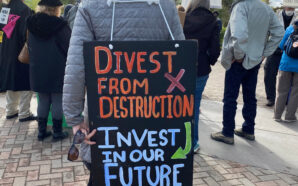Mikhail Zinshteyn
CalMatters
Two seemingly diametrically opposed things were both true about California’s budget in 2023.
The state had to pare down its spending as it confronted a nearly $32 billion deficit for 2023-24. Nonetheless, the final spending plan for the general fund was still the second largest on record — $308 billion in total. As recently as 2019, the budget was less than $200 billion.
How did the state pull it off despite the colossal revenue dip?
Not by raiding its reserves, which this year grew to a record level of $37.8 billion. That money will be useful in the event state tax revenues fall below projections during the current fiscal year, sparing Sacramento from having to make “drastic reductions to core programs that marked the state’s past efforts to close significant deficits,” the governor’s office wrote after he and lawmakers finalized the spending plan.
The fiscal imprecision stems from a quirk in tax deadlines. Because of natural disasters that ransacked most of the state, the Internal Revenue Service extended the deadline almost all Californians had to file from April to October and then to November. The state Franchise Tax Board followed suit. That means the money the state typically collects is reaching its coffers later than usual.
In early December, the fallout from that delayed accounting became clear: The state is on pace to have a budget deficit of $68 billion in 2024-25, the Legislative Analyst’s Office reported. About $26 billion of that is from the deficit that is emerging on the books for the 2022-23 year. Basically, because the state didn’t have all its tax revenue tallied by the time lawmakers passed the 2023-24 budget in June, they didn’t know that 2022-23 would have a massive budget hole. Now the state has to fill that fiscal chasm from last year as another collapse in revenues relative to spending plans materializes in the current fiscal year.
Cuts to one-time spending, raiding reserves and delaying other programs were actions the LAO said the state could pursue to finalize the 2024-25 state budget in June. It remains to be seen if ongoing programs will also have to hit the chopping block.
This has worsened what was already a worrying picture. Analysts for both the Legislature and governor’s office earlier in the year predicted stagnant revenue growth for the next few years and annual deficits ranging from $14 billion to $20 billion. Costs will rise after the Newsom administration negotiated, and legislators approved, a series of generous contracts with state worker unions. And things could get a lot worse if a recession emerges.
The shaky budget outlook is one reason Newsom this year vetoed 156 bills, some with large price tags. Instead, he urged lawmakers to propose costly funding plans through the annual budget process — where they can be negotiated, or die quietly.
His stock veto message went something like this: The budget deal avoided “deep program cuts” to education, health care, climate, public safety, and social service programs. “This year, however, the Legislature sent me bills outside of this budget process that, if all enacted, would add nearly $19 billion of unaccounted costs in the budget, of which $11 billion would be ongoing.”
Even with that frugality, critics have questioned the state government’s narrative of fiscal prudence. The final budget deal reduced actual spending by only $8 billion. The rest of the savings came from borrowing money — or asking another agency to borrow the money — and other fiscal maneuvers. For example, rather than giving colleges and universities $2.2 billion upfront to build affordable student housing, the state told the campuses to borrow the money instead and the state will cover the debt payments. Doing that counts as budget savings, but it also grows the cost of the housing program by 1.4 times because of the years of interest payments.
Also built into the budget plan is an escape hatch: Basically, if revenues aren’t there, the governor can delay spending on various one-time programs by March of next year.
Major issues for 2024: Billions of dollars in planned spending could be delayed or gutted as the deficit picture worsens. Pressure will be on legislators to find the money elsewhere when the next budget is due in late June. That could be through taxes, such as the corporate rate increases the Senate sought in 2023 but that Newsom shot down, spending cuts for one-time programs or dipping into the state’s enormous reserves. Regardless, lawmakers’ progressive vision may run into fiscal reality, setting up a battle over which marquee programs to fund or shelve.






